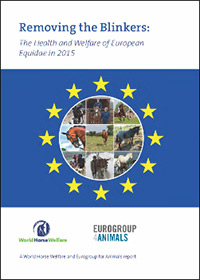We encourage and actively support the responsible ownership of horses, donkeys, mules and their hybrids. The root causes of most welfare problems arise from owners not knowing how to effectively care for their animals, or not being willing to provide the care that is needed. So we work with horse owners, communities and governments to share horse care knowledge and introduce legislative and practical ways to prevent responsible ownership and enable intervention and accountability when this is required.
Equines are kept for a variety of purposes, such as sport, racing, pleasure, tourism, breeding, therapy, and production of meat or milk. This versatility can impact on their welfare, as they can fall into legislative gaps between companion animals and livestock. For instance, in the EU, regulatory provisions on the keeping and care of equines differ between Member States. Only a few have adopted specific legislation on the protection of equines – either through their categorisation of equines as companion animals or as livestock.
That is why World Horse Welfare works towards legislative and non-legislative changes to be introduced to enhance the welfare of all equines throughout the EU.
Some examples are below:
EU Guides and Factsheets on responsible ownership and care of Equidae
In 2017, the EU Parliament adopted a resolution in favour of Julie Girling MEP’s Initiative report on responsible ownership and care of equines which was produced in response to Removing the Blinkers. The resolution’s recommendations included the provision of basic guidance on horse care to be produced and disseminated across the EU.
The suggested guides were produced in 2019 by The Platform on Animal Welfare Voluntary Initiative on responsible ownership and care of Equidae, and World Horse Welfare is supporting the secretariat. The guides set out basic standards for keeping horses and donkeys and were informed by stakeholders across welfare, veterinary medicine, sport and industry.
The ”EU Horse and Donkey Guides” and the accompanying Horse Factsheets (those for donkeys are under development) are designed for owners and keepers of equines (and anyone involved with horses).
Access our Horse and Donkey Guides in different languages below:
Horse Guide (available in different translations)
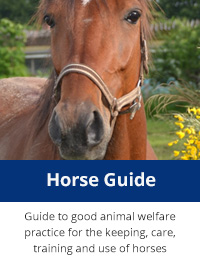
Guide to good animal welfare practice for the keeping, care, training and use of horses.
Donkey Guide (available in different translations)
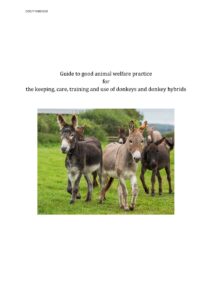
Guide to good animal welfare practice for the keeping, care, training and use of donkeys and donkey hybrids.
We have a number of factsheets about horses, donkeys and their hybrids available to download below:
Horse Factsheet (only available in English)

Our factsheets give guidance on a range of good animal welfare practices for the keeping, care, training and use of horses.
Donkey Factsheet (only available in English)
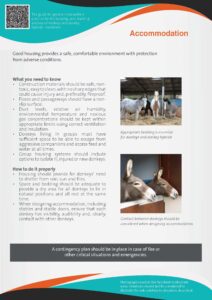
Our factsheets give guidance on a range of good animal welfare practices for the keeping, care, training and use of donkeys and their hybrids.
Guidance to protect the welfare of working equids in tourism
Working equids are employed in tourist activities in many holiday destinations in the European Union, such as horse-drawn carriage rides, donkey and pony trekking, fairs, tours, and temporary riding facilities.
Working equids typically fall outside legislation intended for agricultural or companion animals, leaving them unprotected. This guideline provides recommendations for minimum welfare standards where no laws protect these animals. It addresses competent authorities and equine tourism operators and aims to enhance the welfare of equids used for these activities.
Guidance to protect the welfare of working equids in tourism
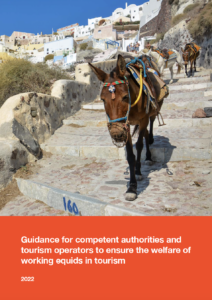
Guide for tourism operators and competent authorities on good animal welfare practice for the use of horses, donkeys and mules in tourism.
Removing the Blinkers
In 2015, World Horse Welfare and Eurogroup for Animals, at the request of the European Commission, published the ground-breaking report Removing the Blinkers: the Health and welfare of European Equidae in 2015, to set out the scope, scale and welfare challenges of the horse sector in Europe.
The research revealed that despite the equine sector contributing over 100 billion euros to the economy each year, and being the second largest employer behind agriculture in some countries, there is very little information about many aspects of the equine sector in the EU
What was clear in the research is that equine welfare problems existed across the EU – including horses often kept in unsuitable environments and a lack of horse care knowledge among owners.
The report provided a five-year roadmap to better equine welfare in the EU, including recommendations for the European Commission, Member State governments and the equine industry.


